| Travel Photos Home Page |
St Petersburg 2017, Part One
|
||||
|
To return to the Paintings section of this website, please CLICK HERE
|
|||
|
To return to the Eastern Europe 2017 page, please CLICK HERE
|
|||
| There was so much to see and do in St Petersburg that I am dividing the photos for this city into three parts. This is Part One, and it features the City itself.
Part Two will feature the Hermitage, which is both a magnificent palace and a famous art gallery. Part Three will feature the Catherine Palace Park and the Peterhof. |
|||
 |
|||
| This is a view across the Bolshaya Neva River (the Big Neva). On the right is the start of the Dvortsovy Bridge. On the left the blue and white building is the Anthropological and Ethnographic Museum. The red column is one of two on the Spit of Vasilievsky Island.
The yellow buildings with the tall spire are part of the Peter and Paul Fortress. There is a bit of an optical illusion playing here as I took this photo with a 30 times zoom on my camera. The Fortress is actually much further from Vasilievsky Island and is on Zayachy Island, close to the Petrogradsky District (also an island in its own right). |
|||
 |
|||
| This is the Admiralty Building. It is in the Central part of St Petersburg, close to the Hermitage. There are parks here which make this a pleasant area to stroll around. | |||
 |
|||
| Close to the Admiralty Building we come across the statue of Peter the Great, the founder of St Petersburg. | |||
 |
|||
| And close to Peter's statue I encountered this troupe of dancers in Cossack costumes, perhaps waiting to do their thing. | |||
 |
|||
| The Metro is a great way to travel around St Petersburg. The stations are deep underground, perhaps because of all the rivers and canals it must go under. | |||
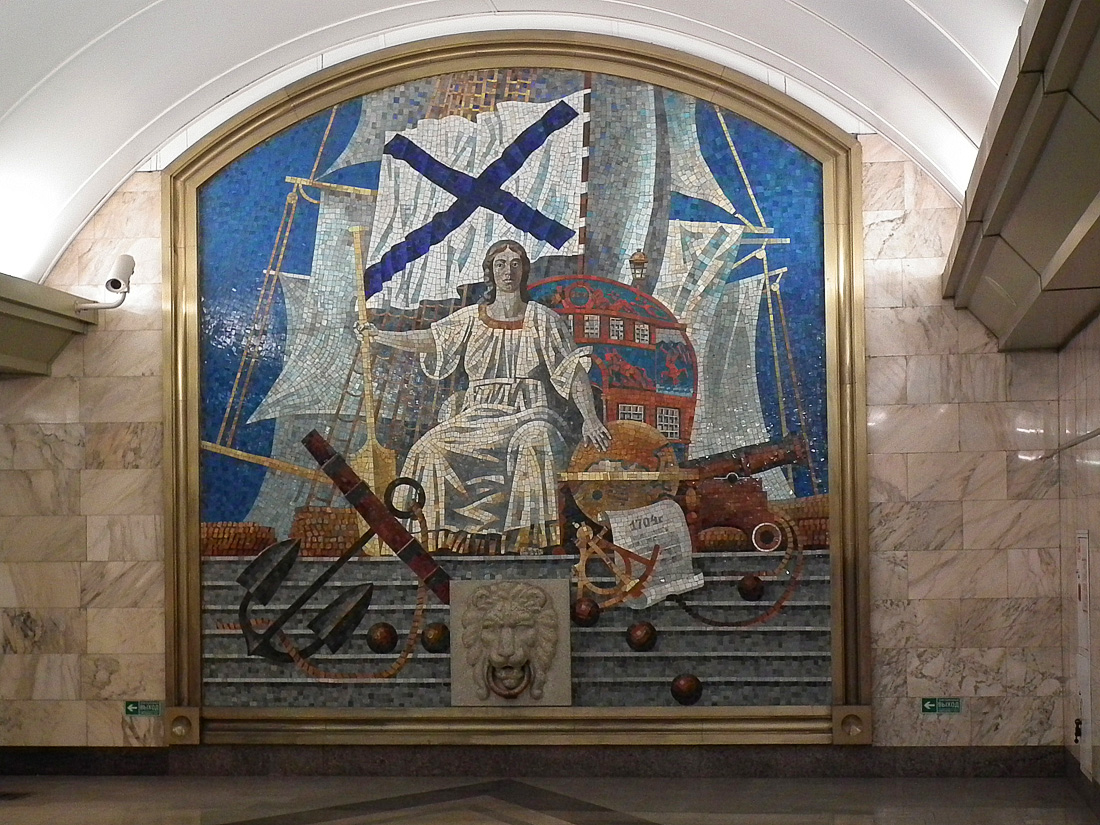 |
|||
| The Metro here may not be as glamorous as the one in Moscow, but this mural at the Admiralty Station caught my eye. | |||
 |
|||
| This is the Arch of the General Staff and its building. It is in the Palace Square, facing the Hermitage. | |||
 |
||
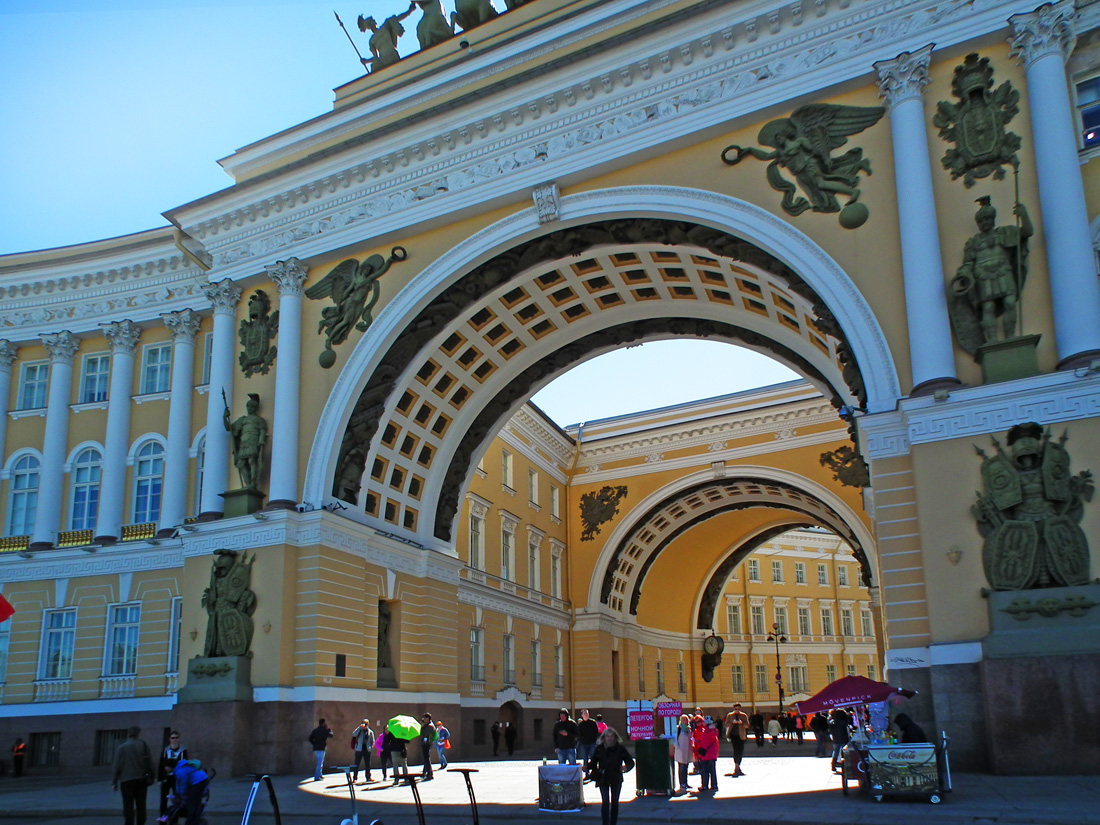 |
|||
| If you walk through the arches you will soon arrive at Nevsky Prospect, one of the major arteries of St Petersburg. | |||
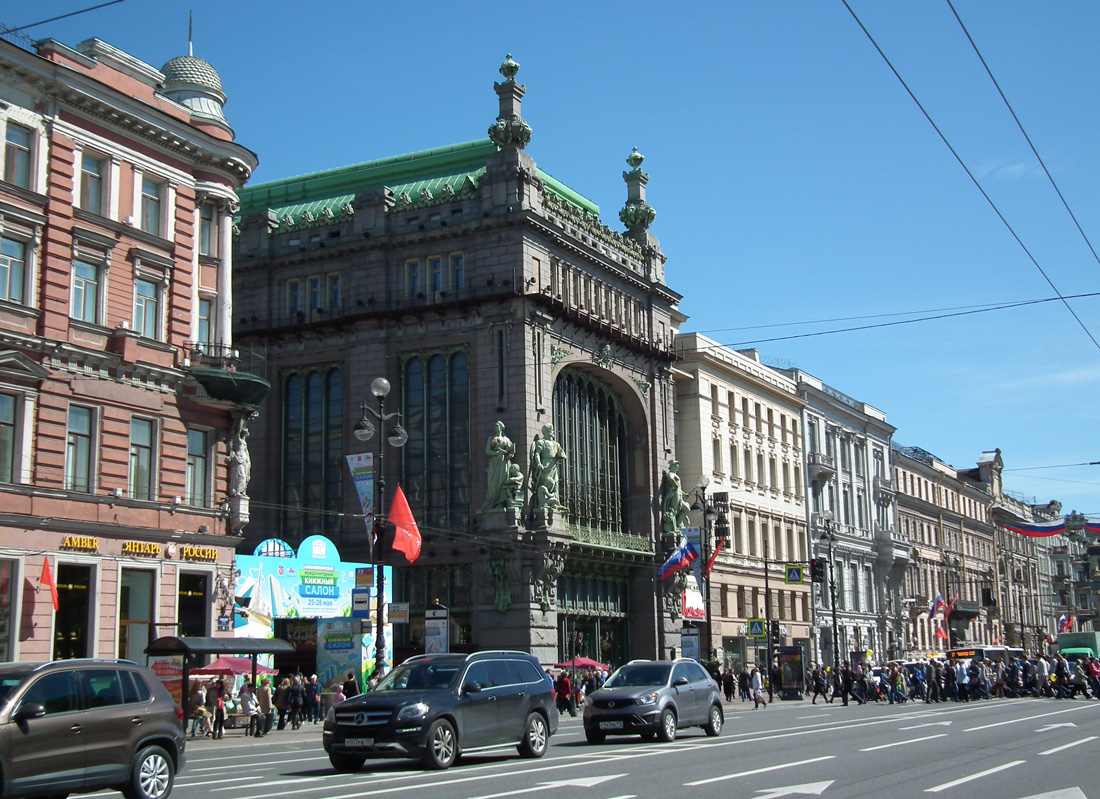 |
|||
| Nevsky Prospect. | |||
 |
|||
| A building on Nevsky. | |||
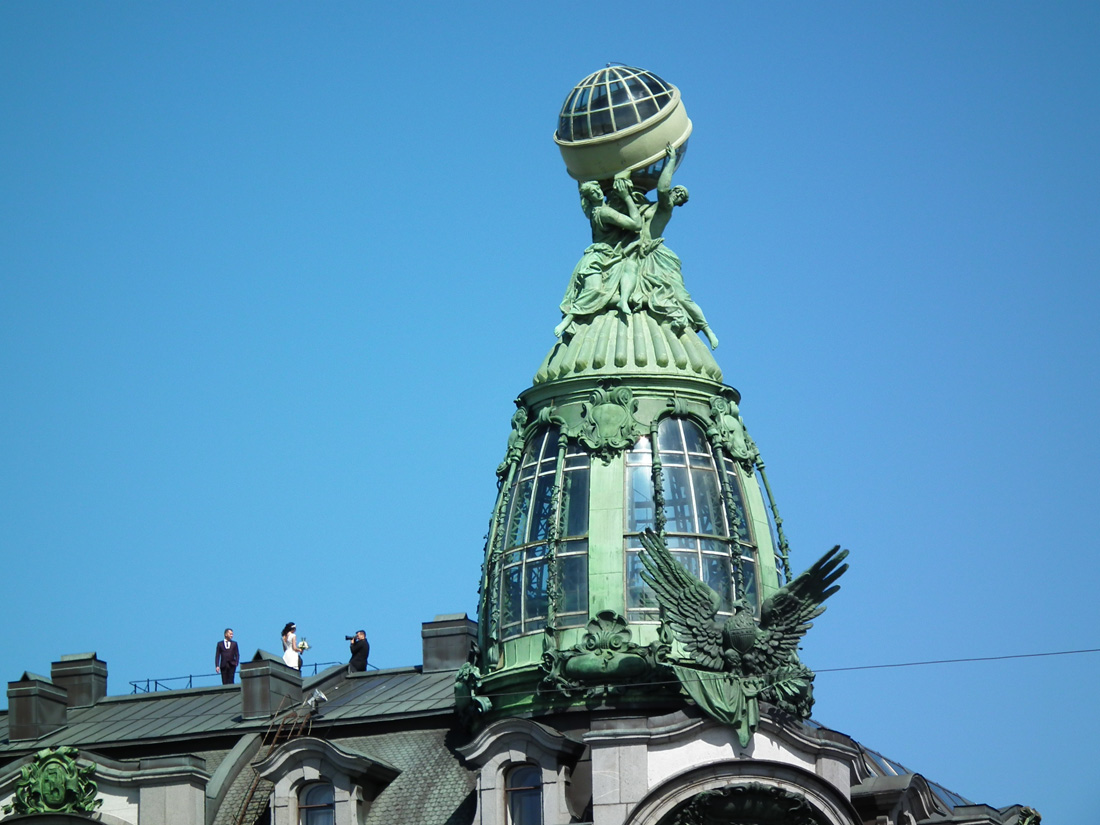 |
|||
| And on the roof of that building a bride is being immortalised! | |||
 |
|||
| The Anichkov Palace on Nevsky Prospect. This was the favourite home of Empress Maria Fyodorovna, the wife of Emperor Alexander III.
She was a Danish Princess before marrying into the Romanov family. She survived the Russian Revolution, outliving all her children and grand-children, and died in exile in Copenhagen in 1928, at the age of 80. |
|||
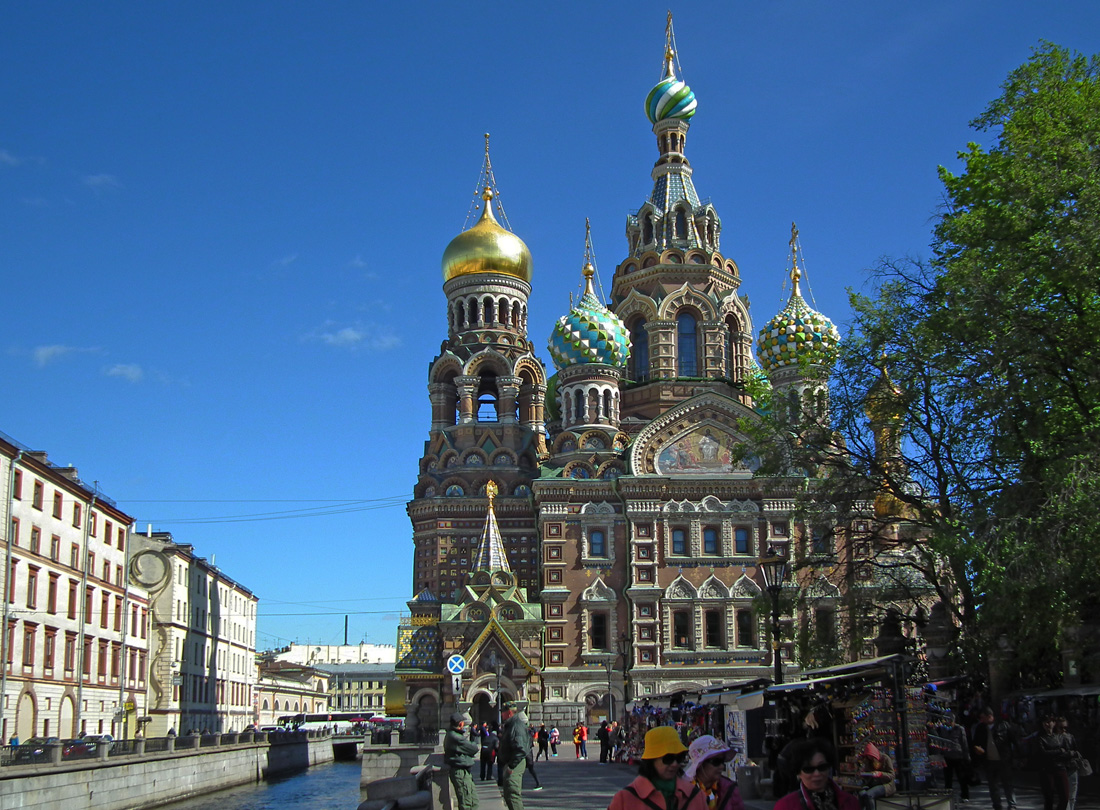 |
|||
| This is the glorious Cathedral of the Savior on the Spilled Blood. It is close to the Palace Square, due East. | |||
 |
||
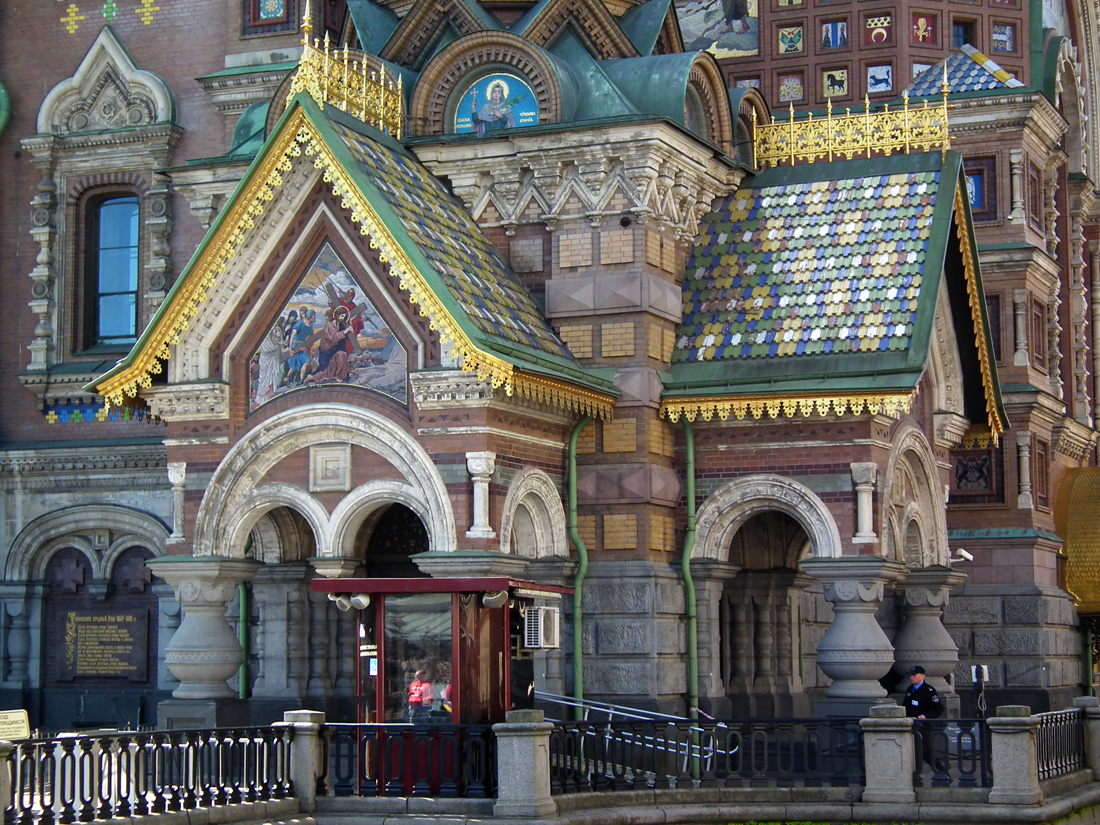 |
|||
| One of the porches of the Savior on the Spilled Blood. | |||
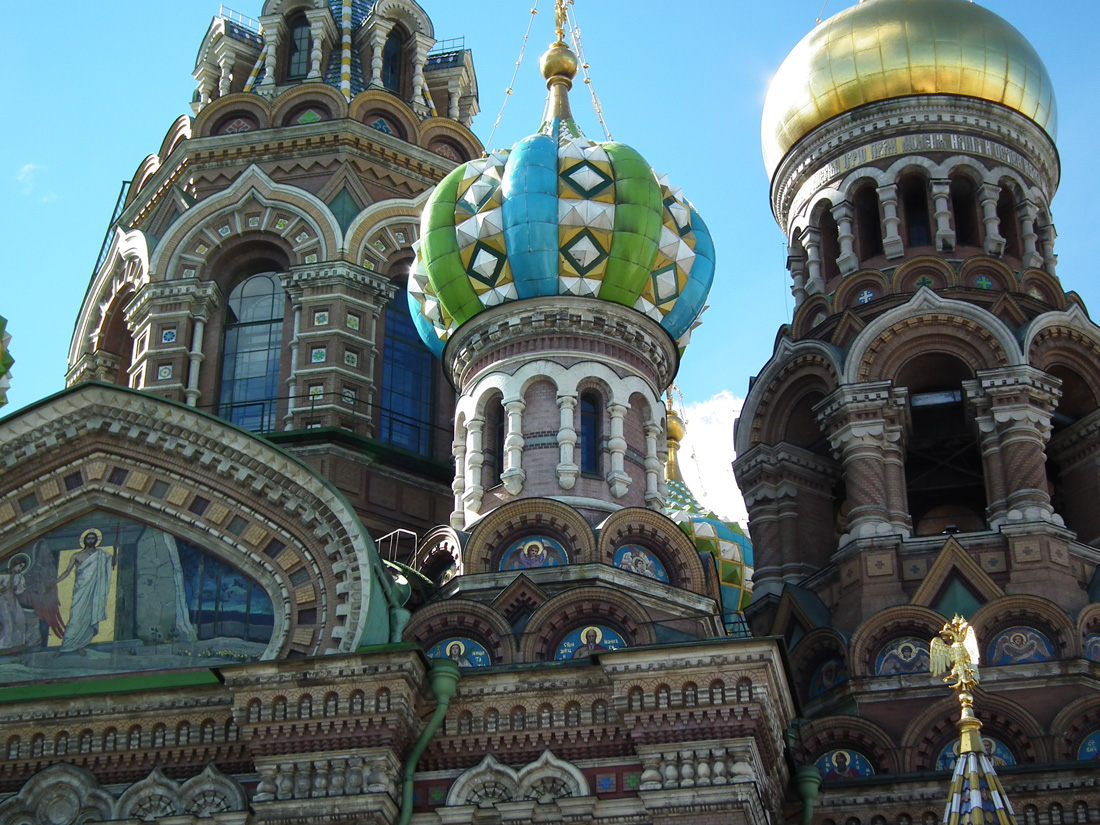 |
||
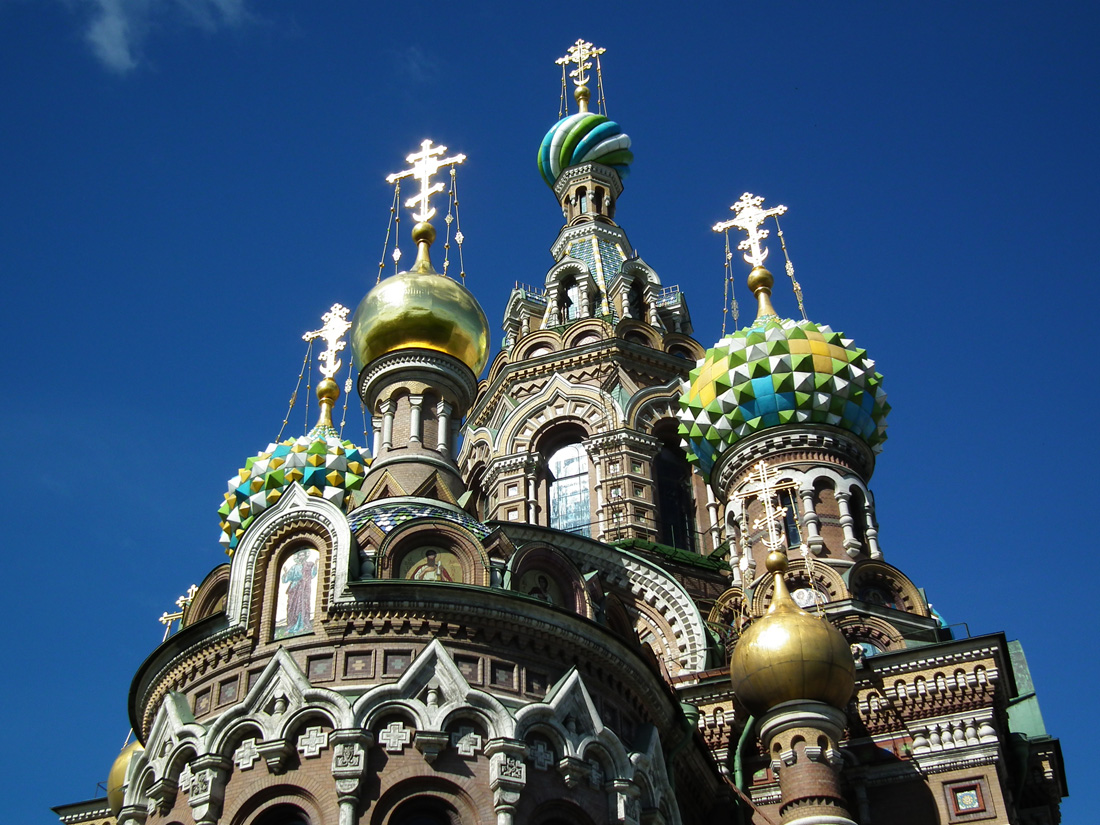 |
||
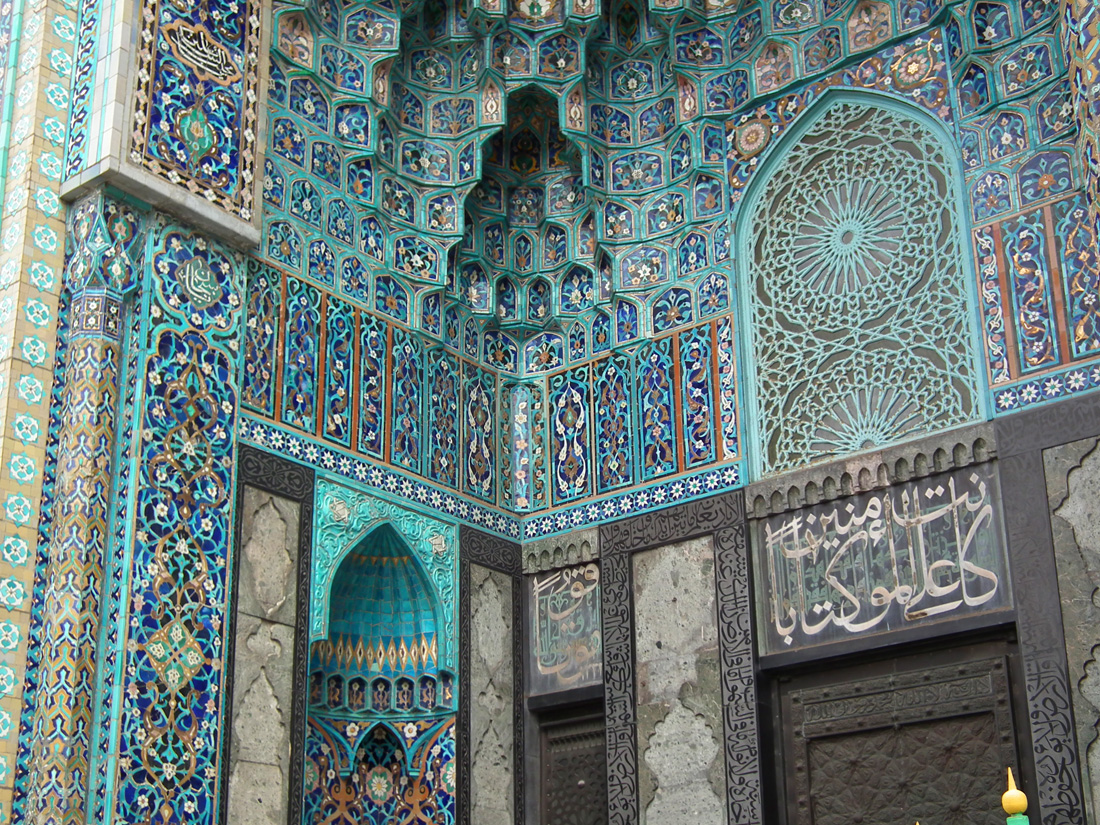 |
|||
| This is the entrance to the Grand Mosque of St Petersburg. It is in the Petrogradsky District. | |||
 |
|||
| This is the beautiful Church of the Assumption of Mary on Vasilievsky Island. Luckily, I was able to take photos of the interior, as shown below. | |||
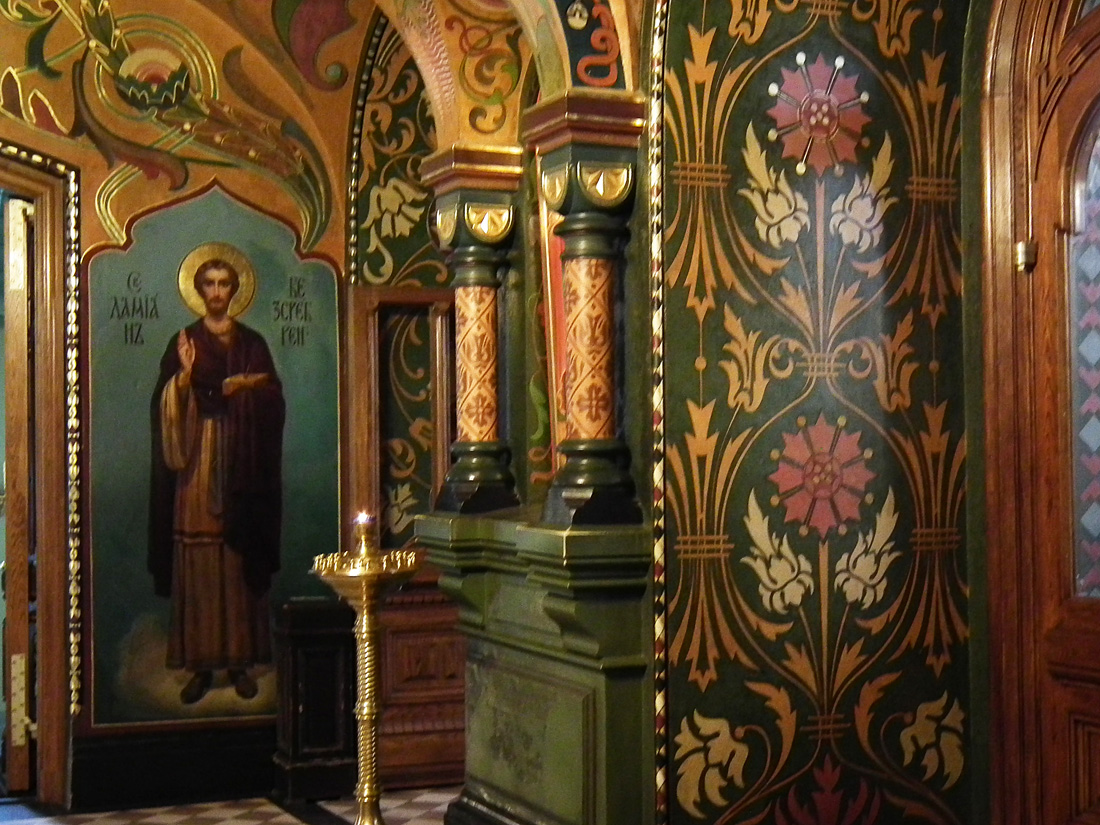 |
||
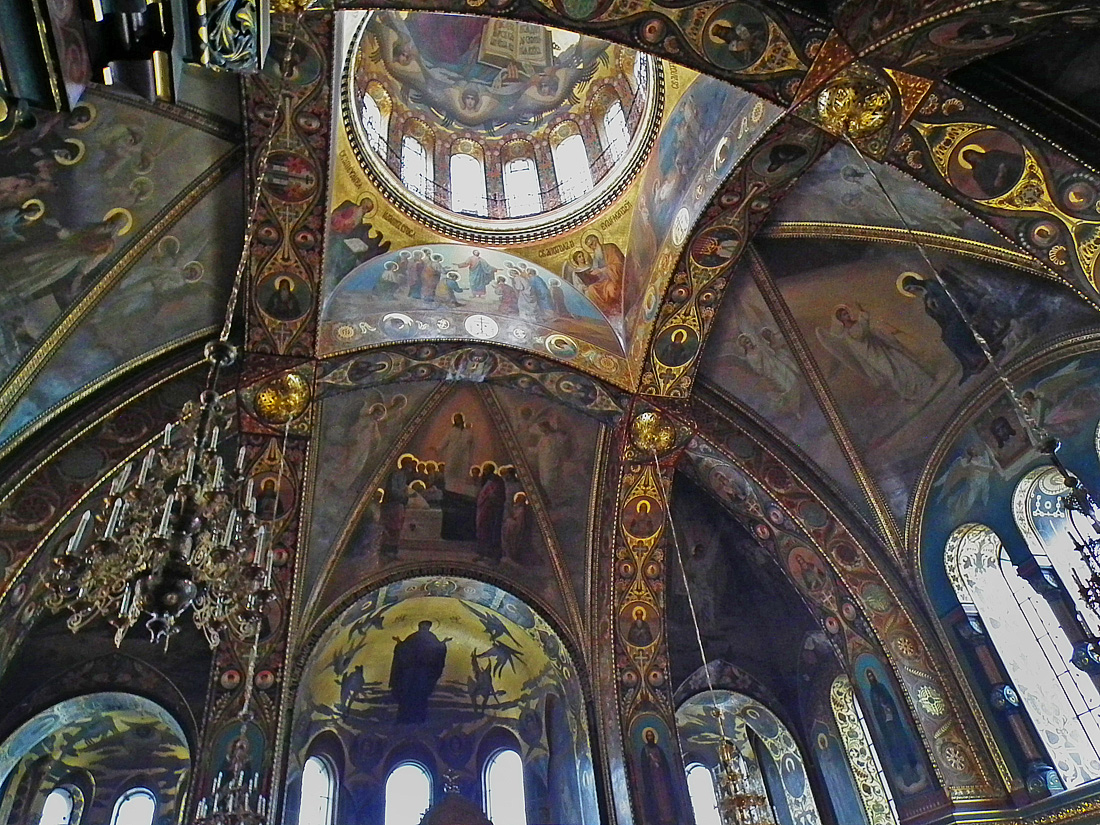 |
|||
| Interior of the Church of the Assumption of Mary. | |||
 |
|||
| The Iconostasis. | |||
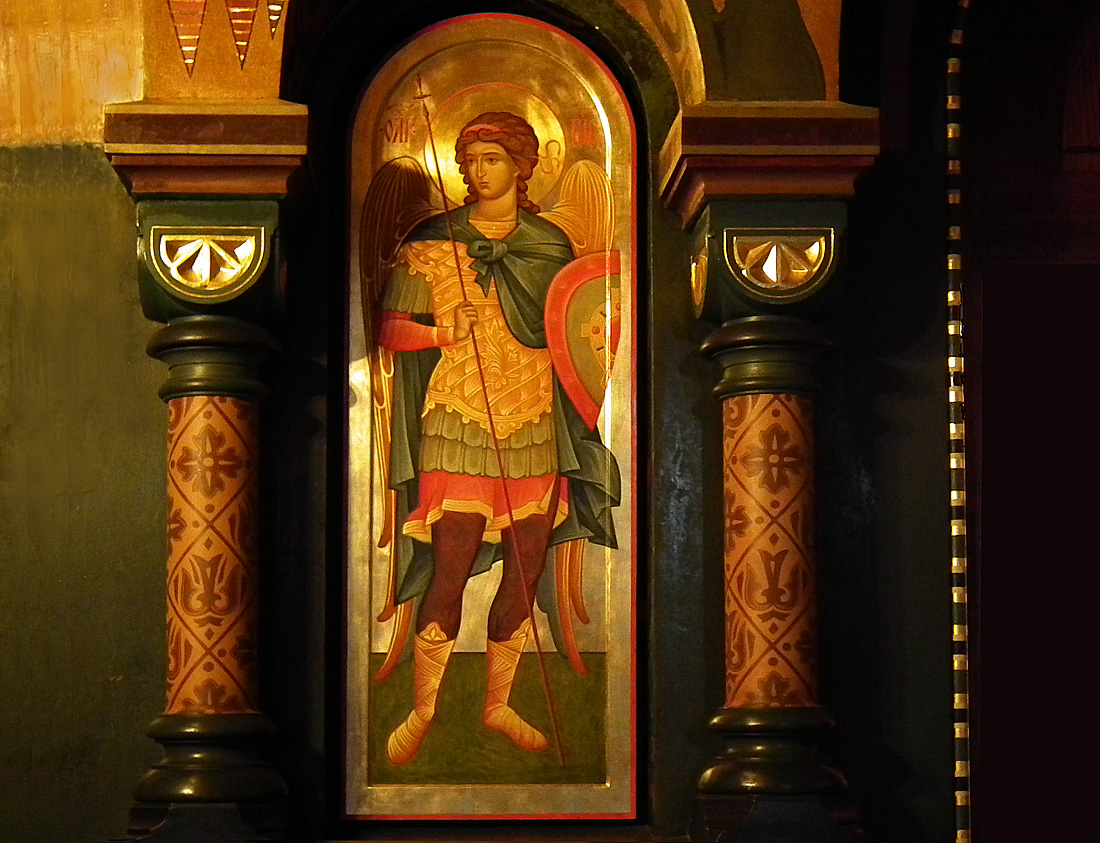 |
|||
| St Michael? | |||
 |
|||
| This is a statue of Lenin in front of the Finland Station in the Petrogradsky District. I noticed that there were still quite a few statues of Lenin in those places I visited in Russia, but I saw no statues of Stalin.
The story of Lenin's arrival at the Finland Station in what was then Petrograd (St Petersburg sounded a bit too Germanic for the times), has been well documented. The German Secret Police managed to smuggle Lenin and other revolutionaries from Zurich all the way to Russia. Germany was tired of fighting on two fronts in WW1, and hoped that Lenin would gain power and sue for peace, allowing the Germans to concentrate their forces on the Western Front. It was an astute move as that is what happened soon after. The original Russian Revolution in February 1917, which deposed the Tsar, was soon led by Kerensky, who tried to establish Liberal Democratic Capitalism in Russia. The Bolsheviks, led by Lenin, basically staged a coup d'etat and took power from Kerensky's Provisional Government in the October Revolution of 1917. |
|||
 |
|||
| This is the bow of the Cruiser Aurora. It played a part in the October 1917 Revolution which saw the Bolsheviks seize power.
Most of the sailors on board the Aurora had joined the Bolsheviks. During a mutiny, Captain Mikhail Nikolsky was killed. The gun shown above was used to fire a blank shot which was the signal to storm the Winter Palace, heralding the October Revolution. |
|||
 |
|||
| The Cruiser Aurora. | |||
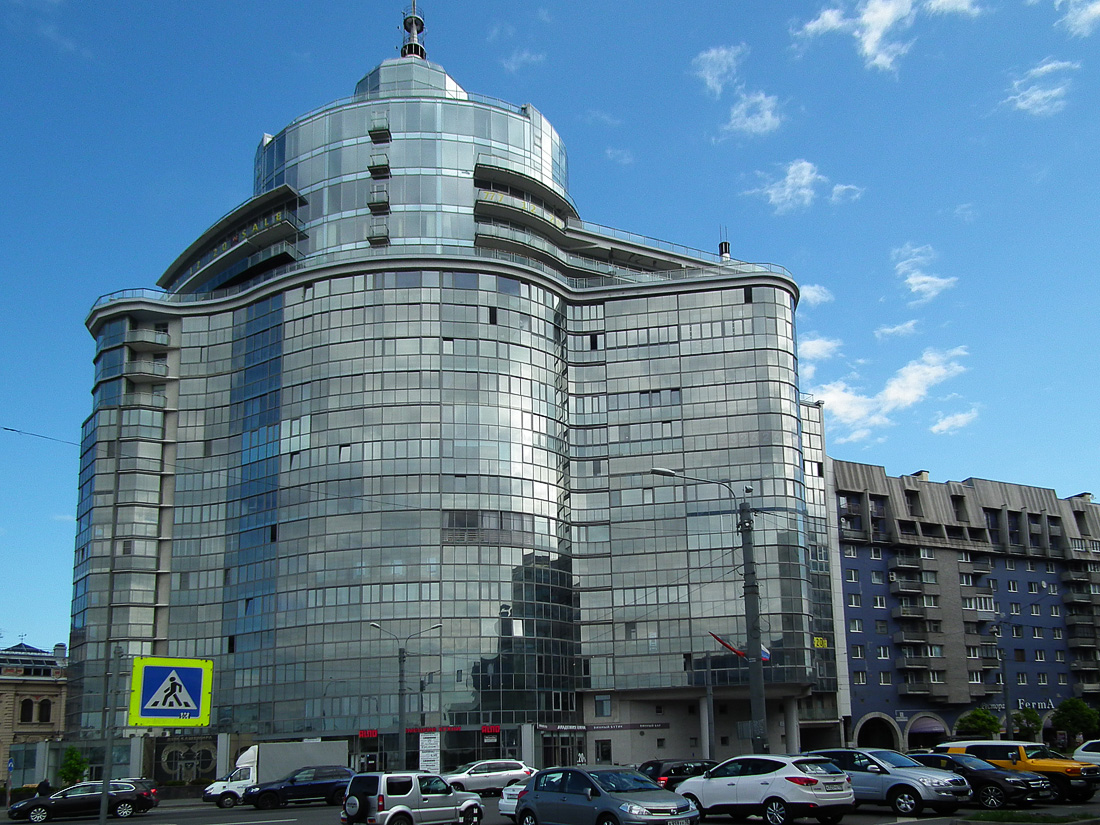 |
|||
| This is the modern building you can see behind the Aurora in the previous photo. | |||
 |
|||
| A view of the Peter and Paul Fortess from the East. | |||
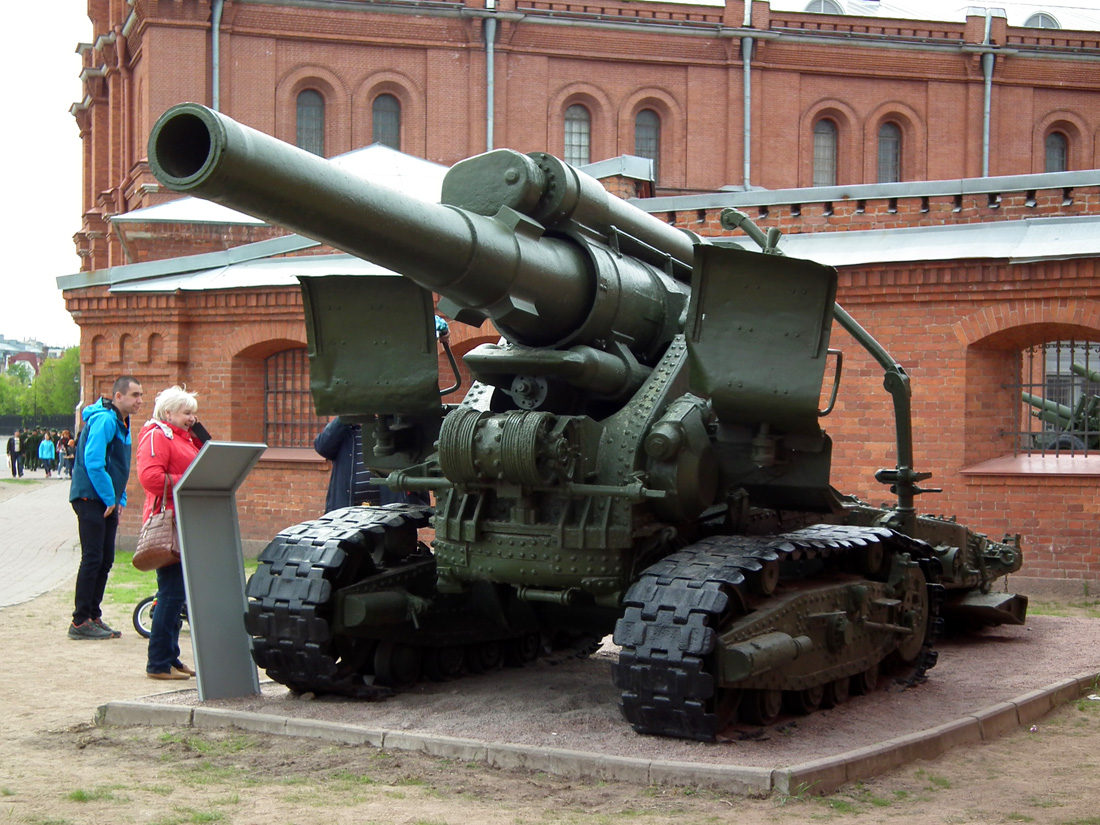 |
|||
| Close to the Fortress, there is a major military museum. This strange mobile cannon caught my eye. | |||
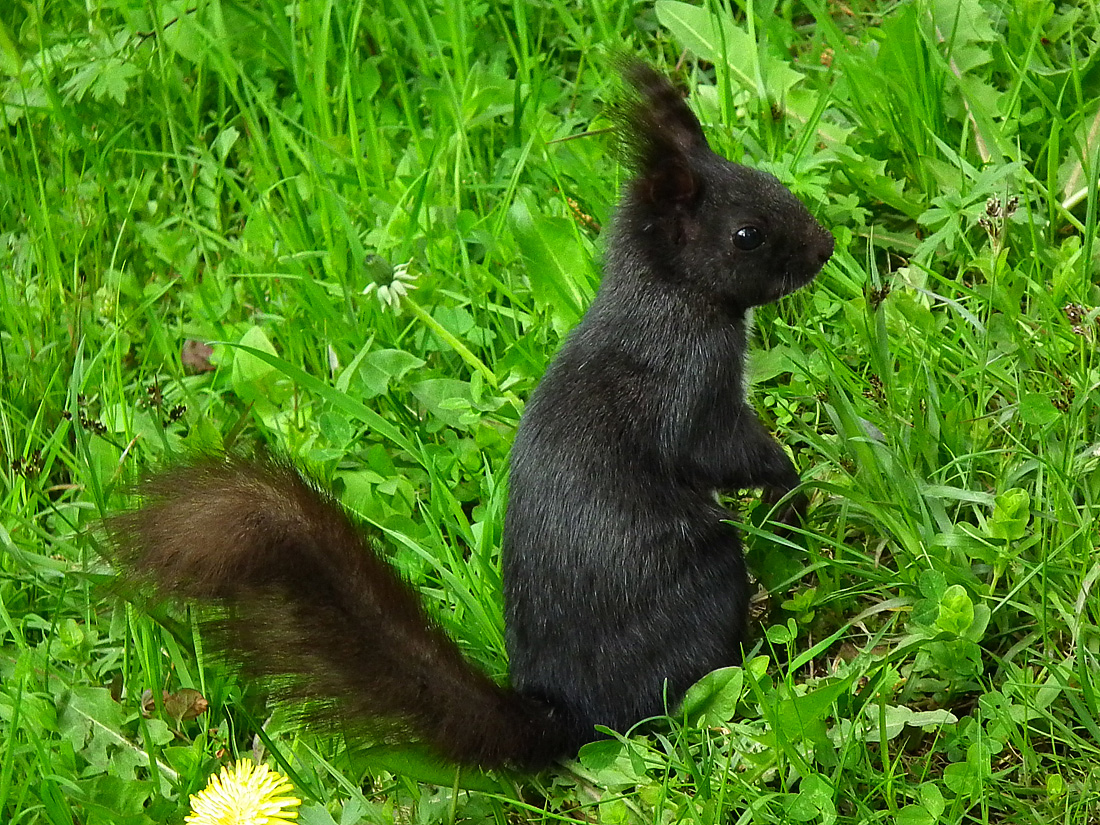 |
|||
| In the Northern Districts of St Petersburg there is an island which is entirely made up of a lovely park. I came across a couple squirrels there. | |||
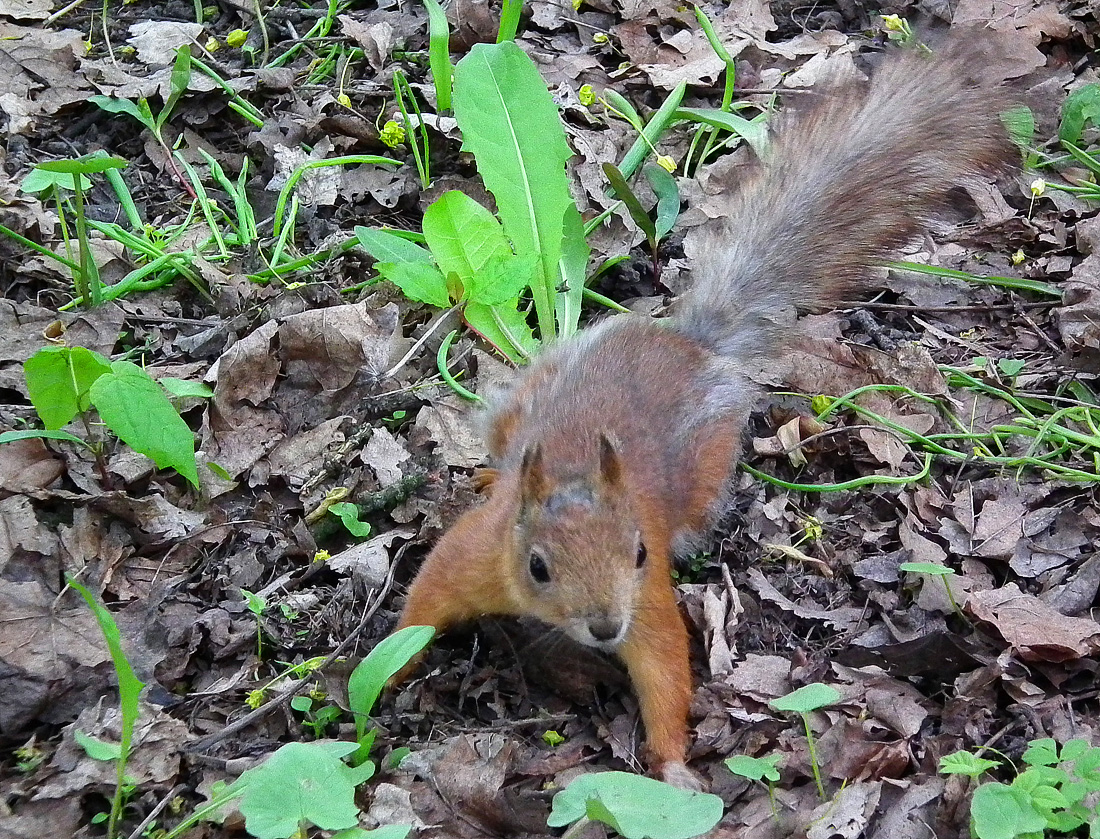 |
||
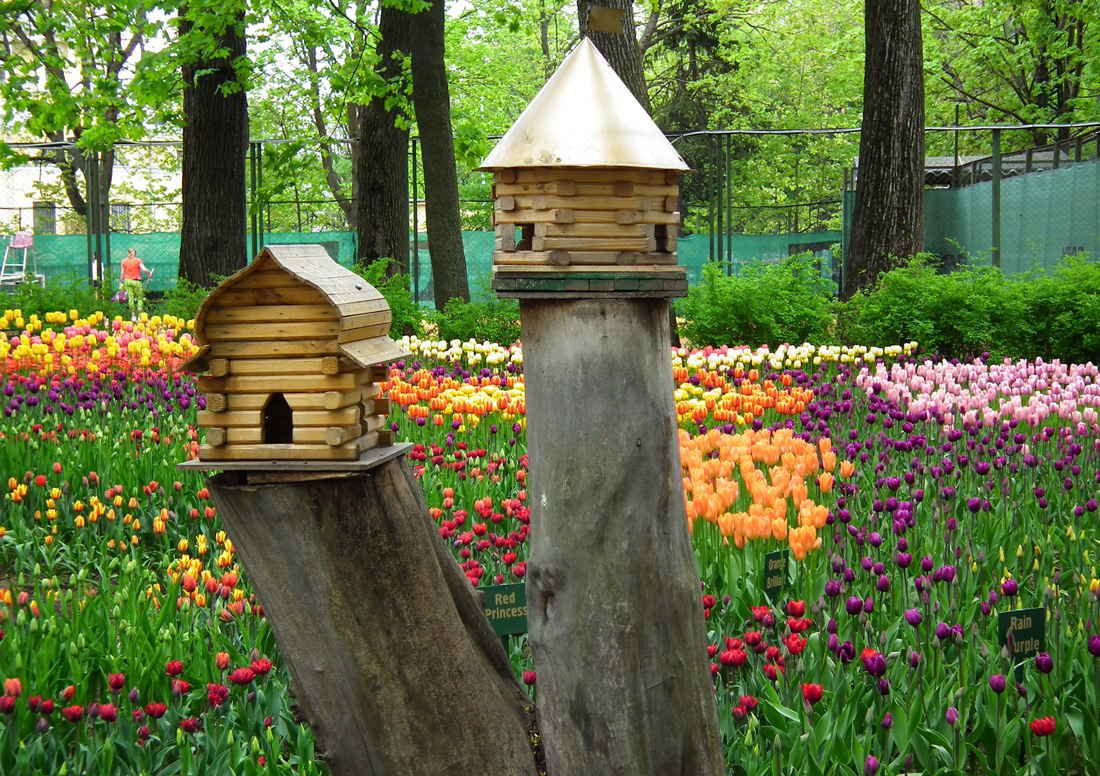 |
|||
| Tulips galore, plus two well-kept houses for birds at that Northern park. | |||
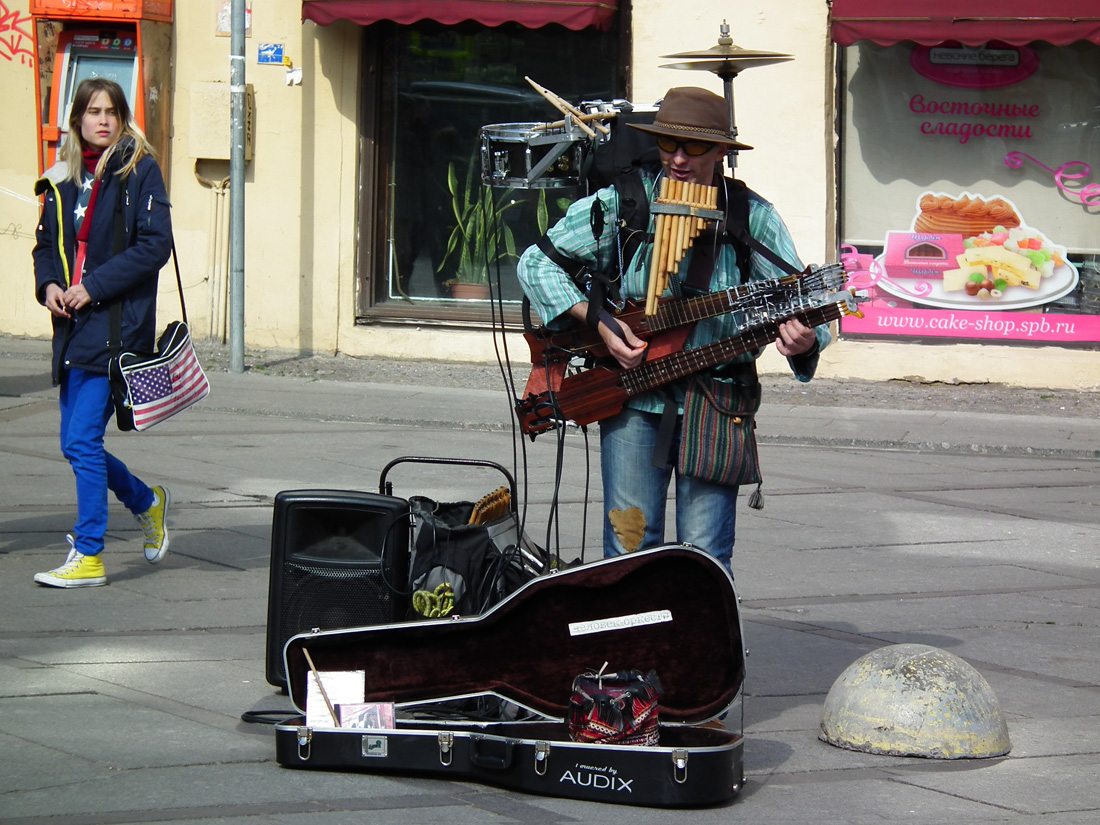 |
|||
| A well-equipped busker doing a good trade. | |||
 |
|||
| And finally, the Yusupov Palace on the Moyka River. This may not be the most attractive palace in St Petersburg but it certainly played a small part in Russian history.
This was where Rasputin was murdered. |
|||
|
To return to the Eastern Europe 2017 page, please CLICK HERE
|
|||